- Home
- slideshows
- miscellaneous
- I flew on a private plane with Blackbird, the flight-sharing startup that's like the UberPool for planes - here's what it's like
I flew on a private plane with Blackbird, the flight-sharing startup that's like the UberPool for planes - here's what it's like
Blackbird pilots fly out of a number of smaller airports on the West Coast. In California, that includes airports in Palo Alto and Burbank. I flew out of San Carlos, California, a small airport about ten miles south of San Francisco International Airport...

...which is where I met the private plane — a single-engine Pilatus PC-12 — that would take me and my fellow passengers to Monterey. Due to its larger size, you could book this particular plane using Blackbird's Reserve and Charter services, which are comparable to Uber's more luxe services, like Uber XL.
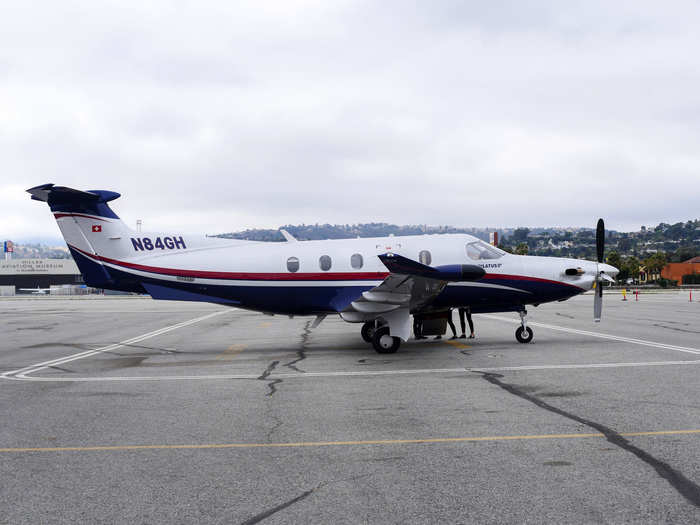
Blackbird's Reserve service has been around the longest, offering seats priced around $300 on scheduled flights, from Oakland to Burbank, California, for example. Charter allows you to rent out an entire plane for your party and book a trip entirely on your watch.

The prices are right up front on Reserve flights as well since these routes are on a fixed schedule.
And then there's the newly-launched Hitch service, available only in California for now, where passengers fly on smaller planes. Seats are as low as $50, but you get what you pay for: flights aren't as regular as they are on Reserve, so it can take time to match with a pilot that's going your way — if you match at all.
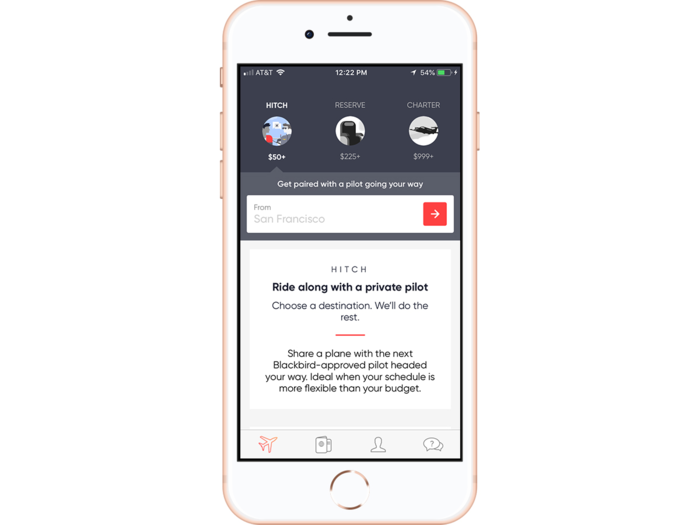
There's a blurb on the app stating that Hitch is "ideal when your schedule is more flexible than your budget." It's also better to request a Hitch flight in advance, at least a week, so this isn't the best option for short notice transportation, like Lyft can be.
Despite the convenience factor, people still can be squeamish about flying, especially if it's on smaller aircraft. That's something Blackbird CEO Rudd Davis understands. "We need this to be a safe network," he told Business Insider. "We need people to trust it."
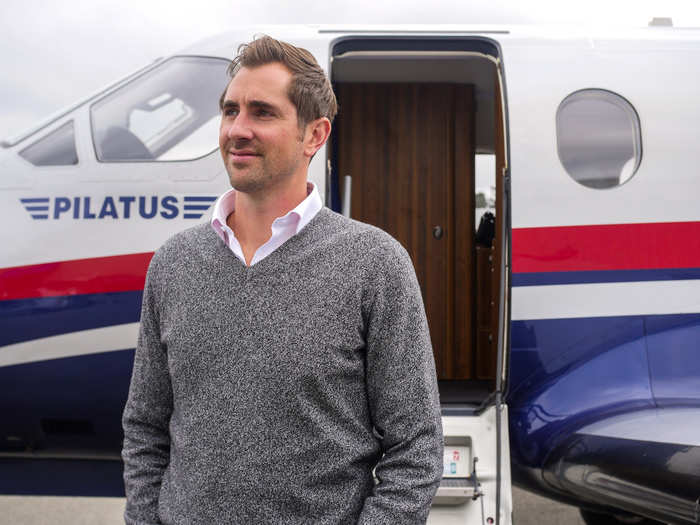
The platform's pilots are part of that trust-building. Blackbird gives them quite a bit of authority, allowing them to decide if a flight should be cancelled due to inclement weather, among other things.
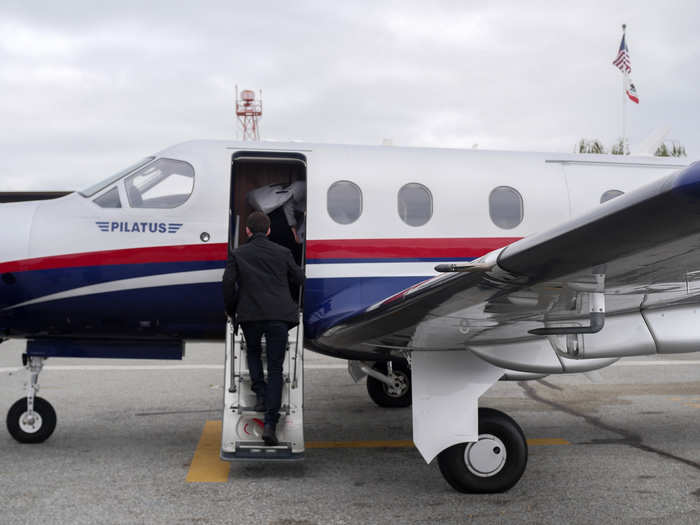
Our pilot, Ian, owns his own aircraft.
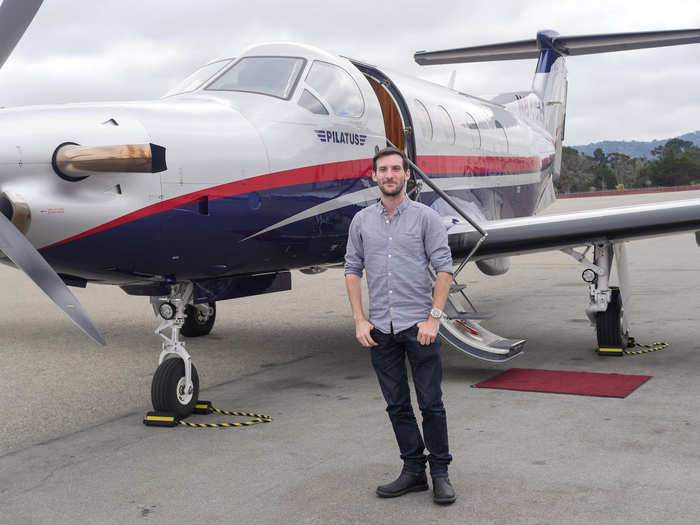
Ian flies the Pilatus PC-12, a Swiss plane known for its versatility and efficiency, regularly since he purchased in it 2015. He runs a plane parts manufacturing company as his "day job."
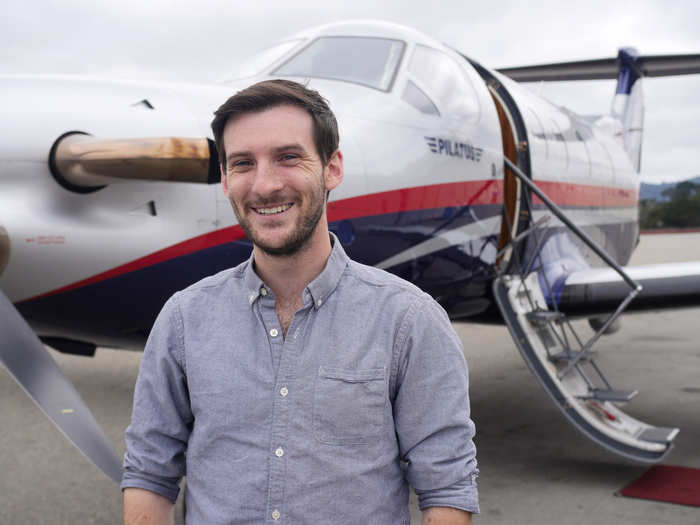
He wouldn't disclose how much he paid for it exactly, but an online listing for the same model suggested it's in the $5 million range.
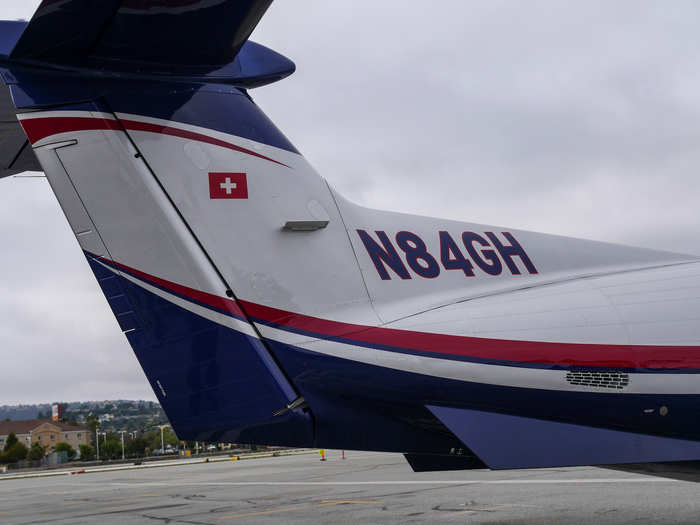
Source: Corporate Jet Investor
The only time I'd ever seen someone cross the tarmac to board a flight was in the movies, so I was a bit excited to simply walk onto the plane.
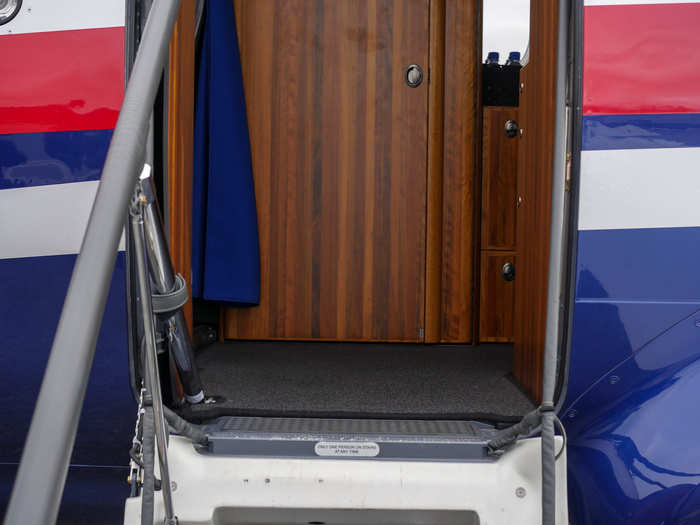
But this was also something that concerned me a bit. Passengers aren't required to enter through any form of security akin to traditional TSA checkpoints. Jamie Loberman, Blackbird co-founder and Head of Technology, said that background checks are run on Blackbird app users and terrorist watch lists are scanned as well.
But still, I was hoping I'd have to go through at least a metal detector.
Once inside, I found six seats with blue pillows laid neatly on top, four of which were faced toward each other club-style.
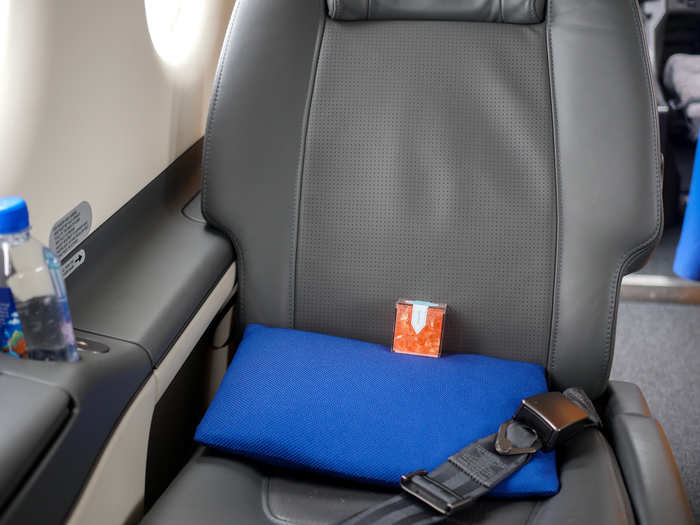
Water and candy were waiting for us, just like you'd find in some Uber or Lyft cars. And, also like the ride-sharing companies, Blackbird pilots can choose if they'd like to provide extra treats for passengers. They're not obligated.
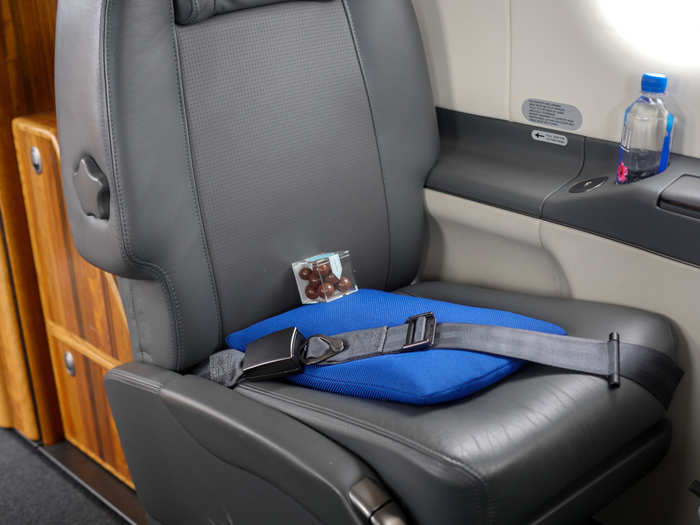
I did a quick run through of the plane, looking for familiarities I knew from my experience flying on commercial jets. A personal overhead lamp was there...
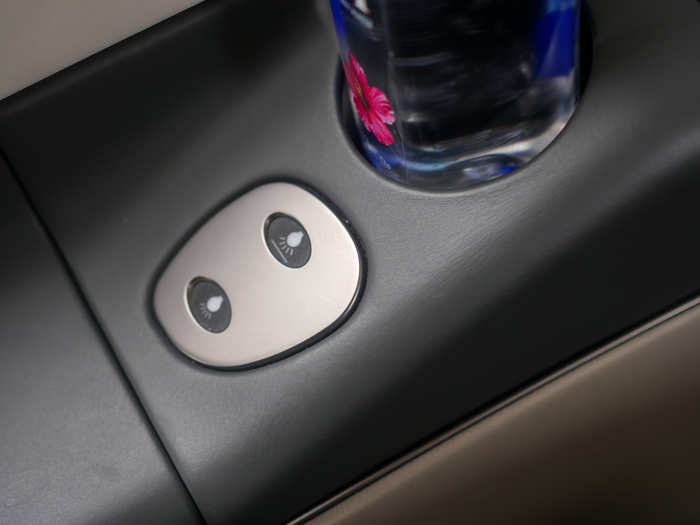
...as was an outlet and some USB ports...
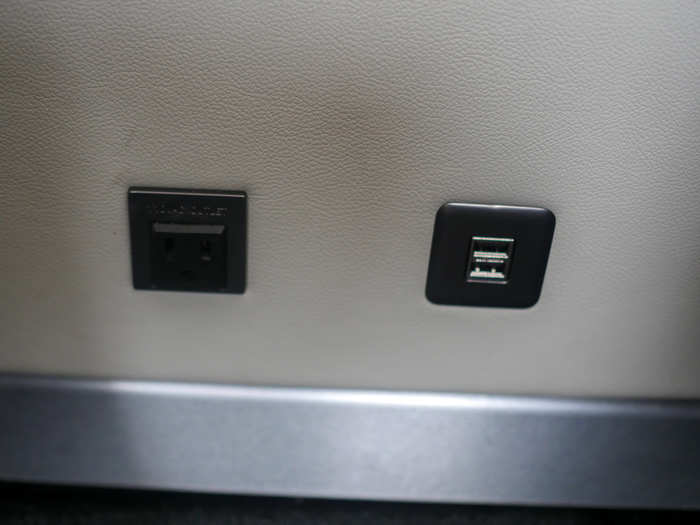
...and tucked-away tables neatly folded out. If I'd had my laptop, I could have easily done some work during my 25-minute flight to Monterey, California.
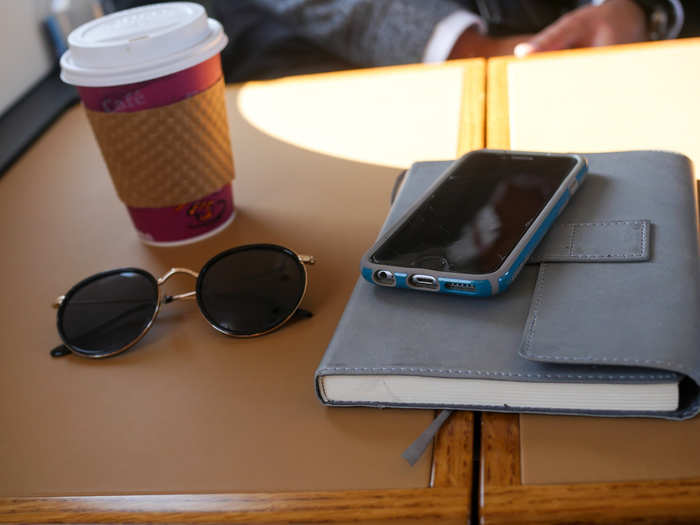
I decided to catch up on emails and the news of the day instead. We flew low enough the whole way that I had sufficient cell reception to use my phone.
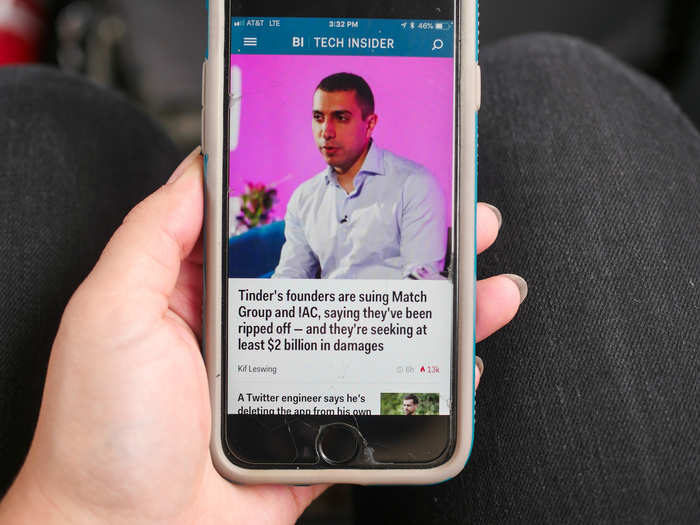
A compartment between the cockpit and the passenger seats is where the bathroom sits, with doors that close on either side providing privacy from others on the plane. No one used it during my short trip.
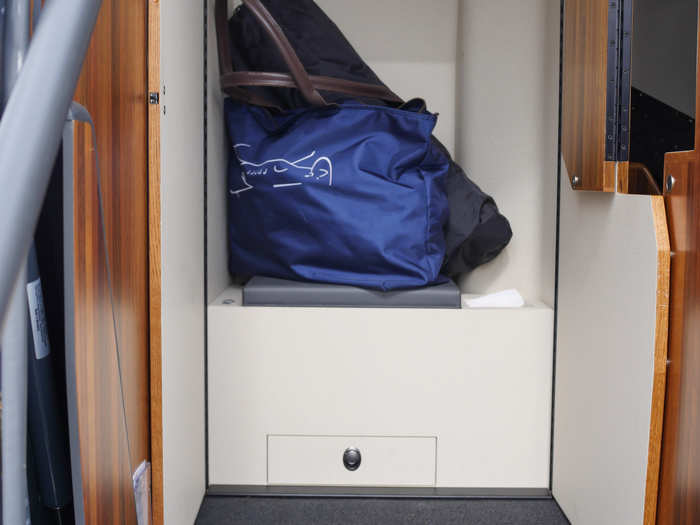
Overall, after a few minutes spent on the plane, the experience didn't feel as exotic as I thought it would. It looked and felt similar to a traditional flight, and I wondered if future passengers would become accustomed to it as quickly as I did.
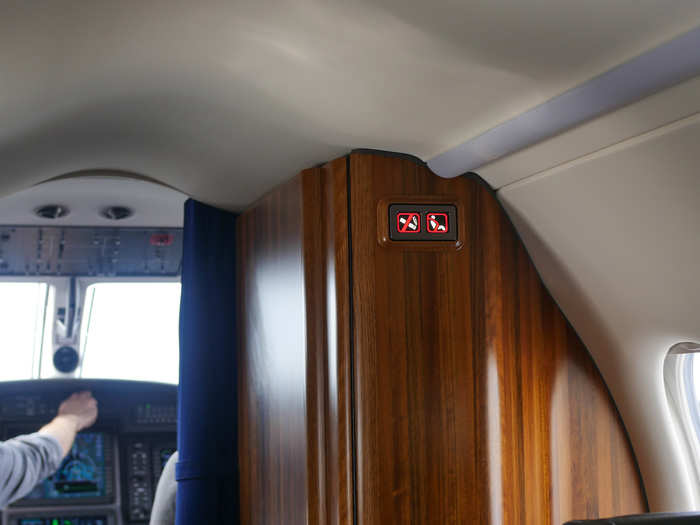
As I buckled myself into my seat, Ian yelled out an invitation to the group for someone to ride shotgun. I quickly volunteered myself.
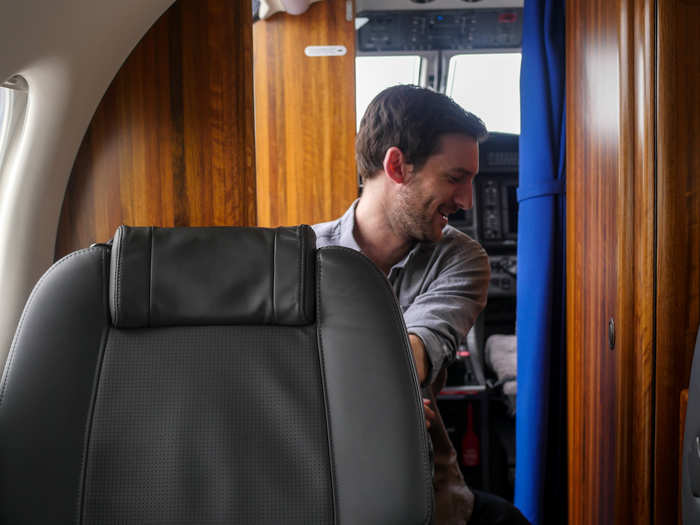
After I strapped the headset over my ears, I kept quiet and let Ian focus. I was nervous, to be sure — especially since, at 28, he's not much older than me. But he carried out the pre-flight checks with a confidence I found reassuring.
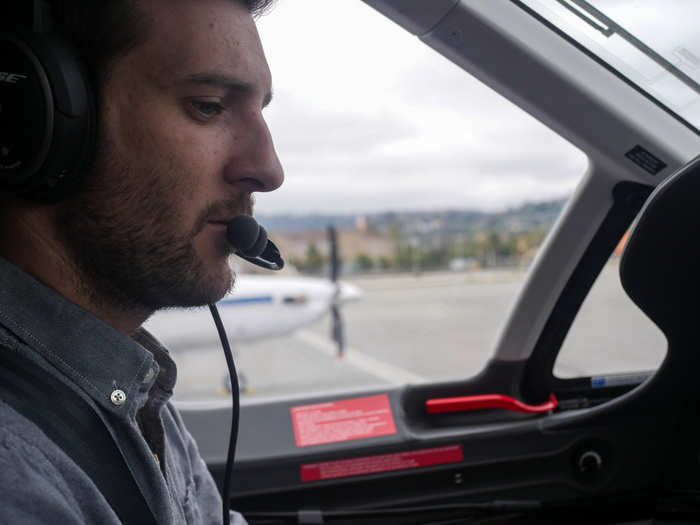
He kept a laminated checklist attached to the yoke to help guide him.
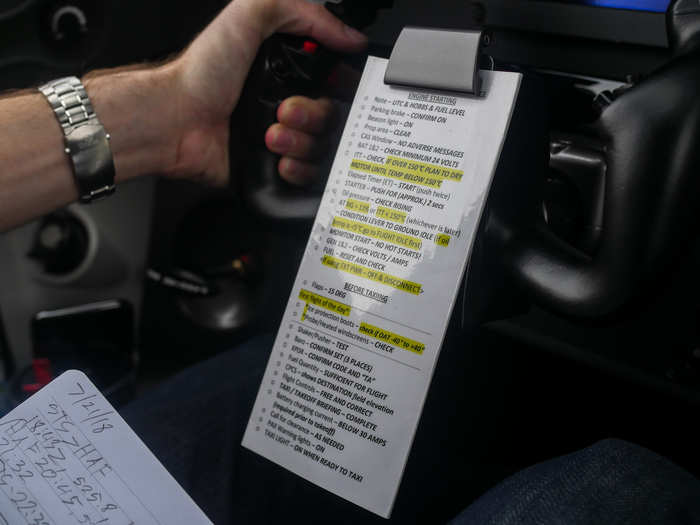
We made our way to the runway for takeoff...
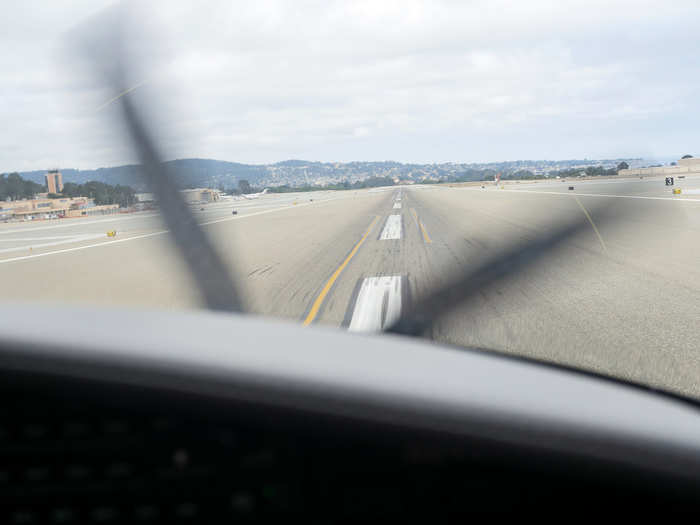
...and ascended into the fog, with California's mountainous terrain beneath us. We made chit-chat through our headsets, but for the most part I kept quiet to let him concentrate — it wasn't the same scenario as being in an Uber or a Lyft, where you can easily talk to the driver.
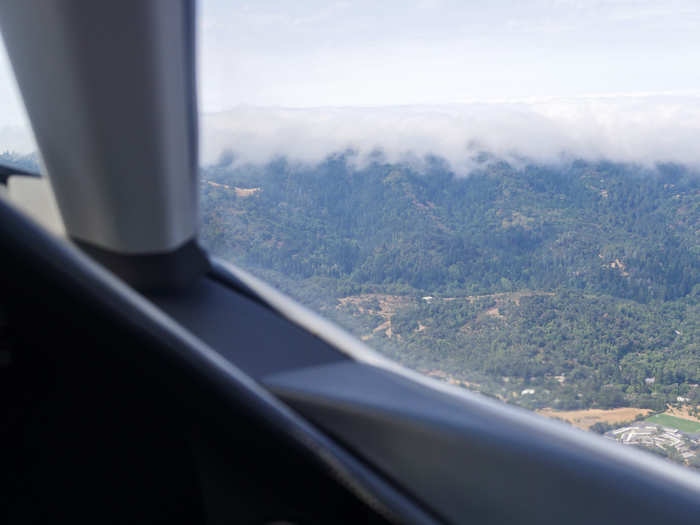
He made it look easy though as he spoke with flight control and fiddled with the buttons. It was a similar feeling to the one I had the first time I hopped into an Uber and paid a stranger to drive me where I needed to go. I remember growing quickly used to the concept. If this app took off, private air travel could just become...normal.
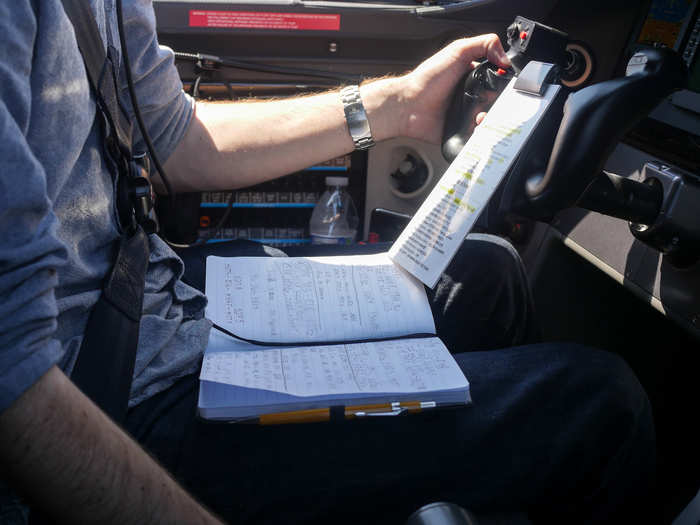
That's a big "if," though. We're still talking about an app that involves booking multi-million-dollar machines. This is not a cheap travel method for the mass market, at least not yet. But if it takes off anywhere, it'll be in the San Francisco Bay Area, which is flush with Silicon Valley cash.
Eventually, our short flight ended. The landing was smoother than ones I've experienced on commercial flights.
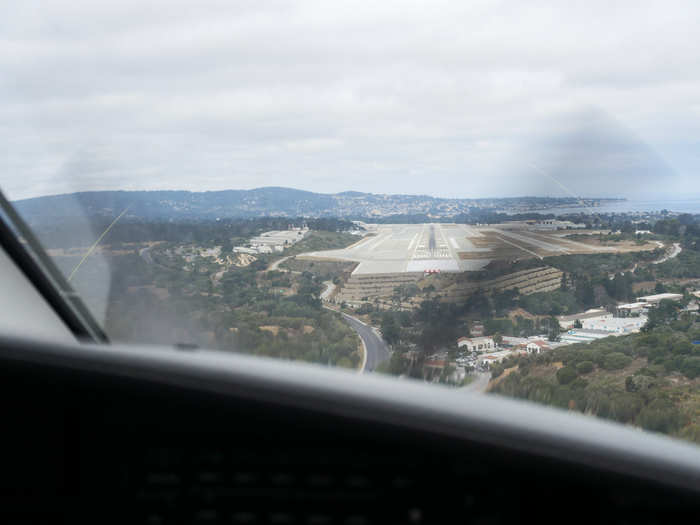
And just like that, I stepped off the plane, theoretically headed toward a pick up zone for a Lyft or an Uber to take me to my final destination.
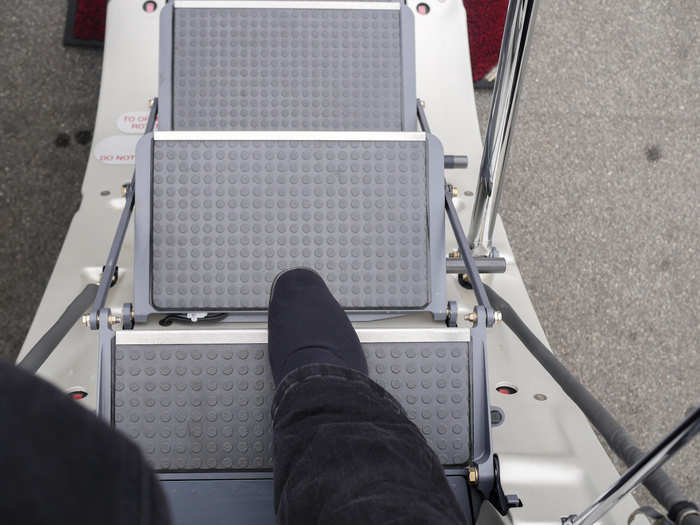
It was one of the ritziest things I'd ever done. The plane was beautiful, smoothly flown, and emanated pure luxury. However, a Reserve seat on a plane like this through Blackbird goes for around $300. Hitch passengers shell out $50...
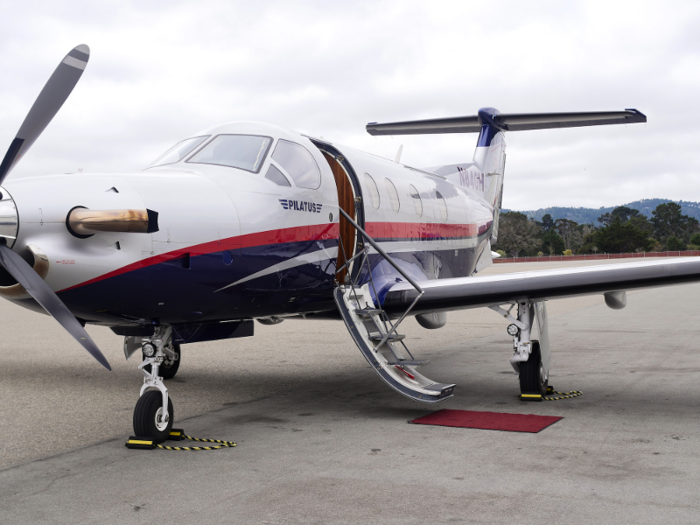
...for a spot on something much smaller and ordinary, like this little guy.
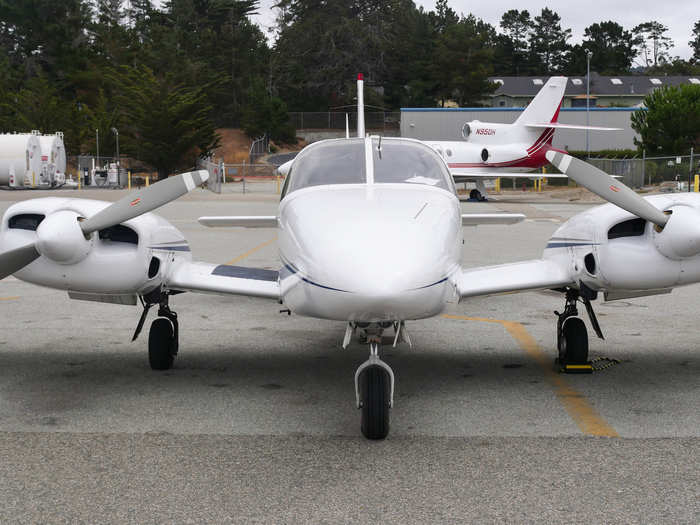
After lunch in Monterey, this Piper Seneca was set to shuttle us back to San Carlos.
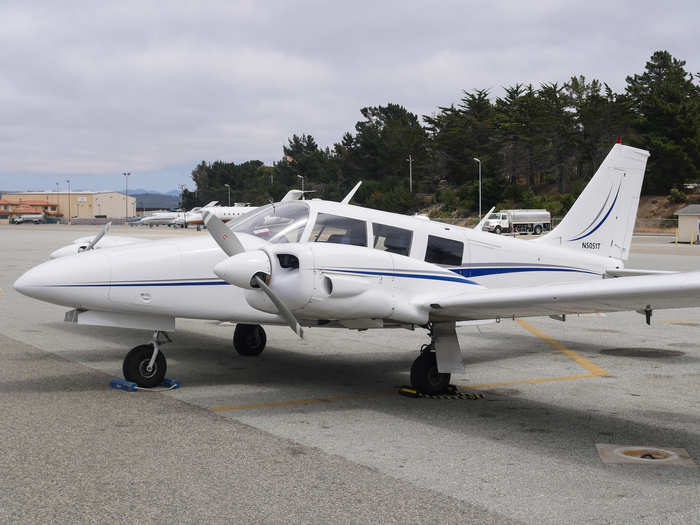
The plane is a good fit for Blackbird's Hitch service, where the idea is to cut down travel costs for both pilot and passenger.
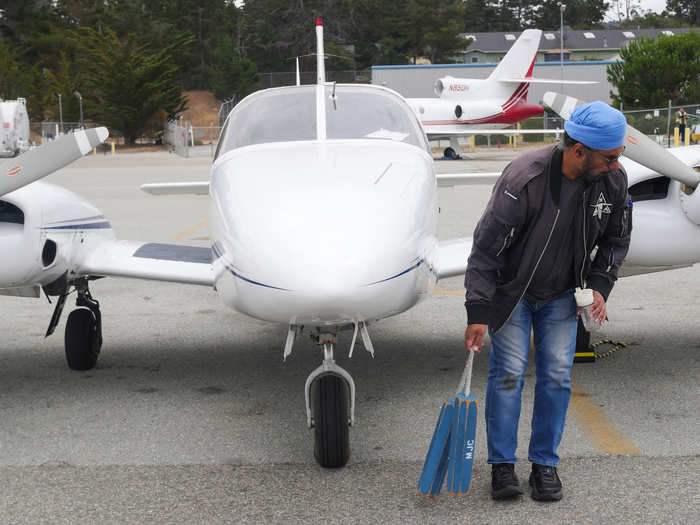
Its pilot, Anandeep, is saving up to buy his own plane, and rents this one to fly with Blackbird in the meantime.
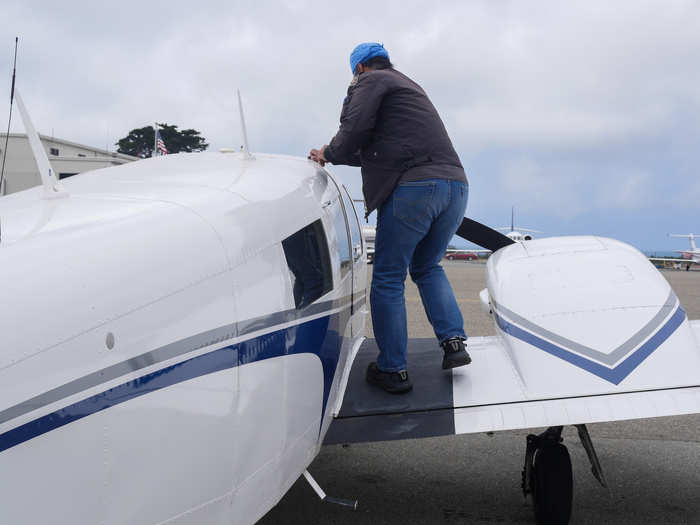
He gave us a safety spiel, demonstrating the hand motion he would make should our conversation onboard need to stop so that he could communicate with flight control. Ian didn't lecture us like this, though he said he normally does when flying with Blackbird.
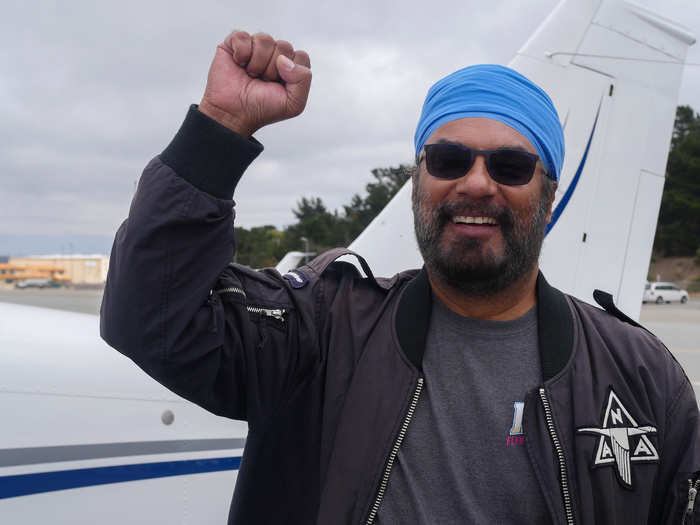
He was thorough in examining the Piper, checking to make sure everything was ready and in place for take-off.
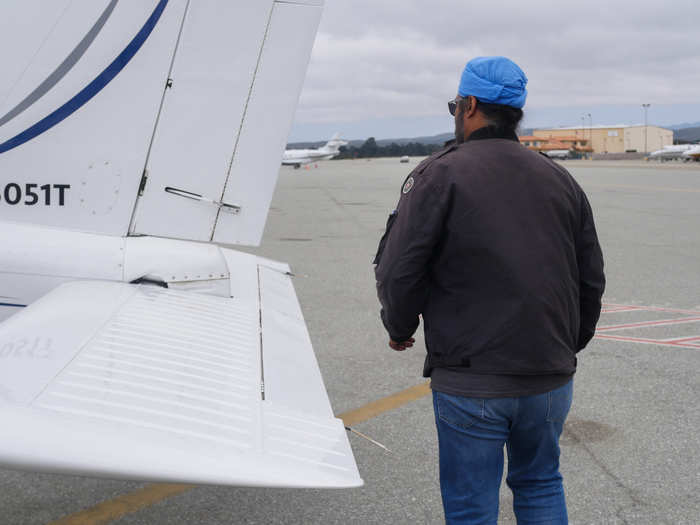
Finally it was time to board the six-seat cabin. I climbed in at least somewhat gracefully through a door behind the left wing.
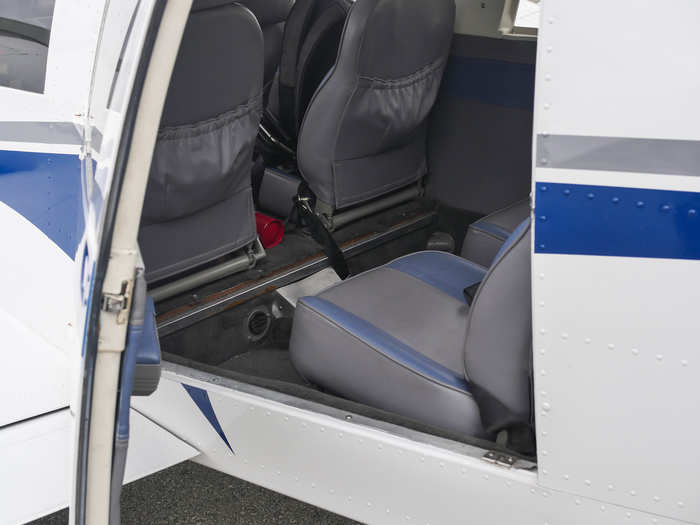
Once inside, I turned around to find a little space for luggage.
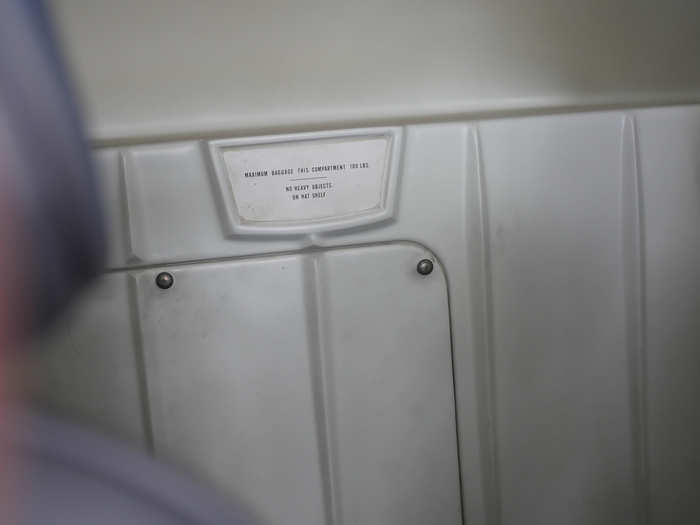
Anandeep and another member of the group had to mount the right wing to get into the cockpit easily.
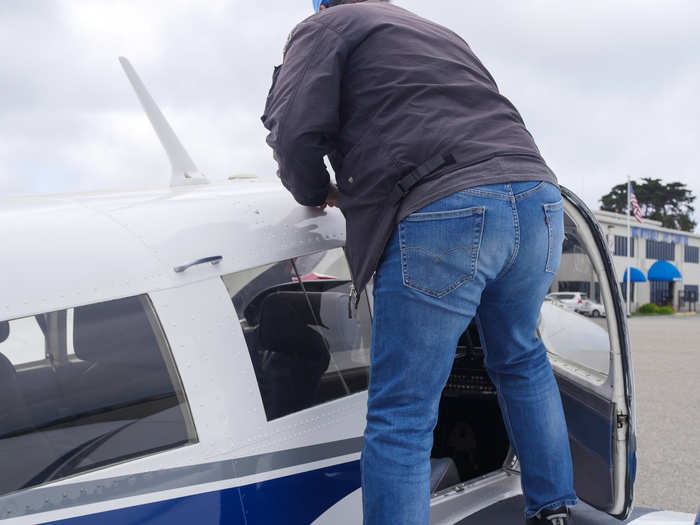
But our flight aboard the Piper Seneca wouldn't be as smooth as the first. Anandeep spent a dew minutes trying to fire up the left engine and, when he did and we took off north, we looped back around to Monterey to land after two minutes in the air due to low hanging clouds.
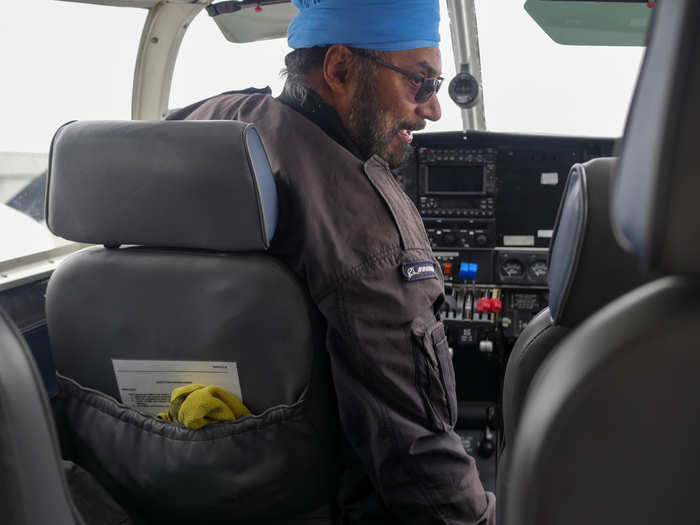
Unlike Ian's Pilatus, the Piper isn't equipped with instrument flying technology, which would aid the pilot should fog or other elements obscure vision.
It was entirely Anandeep's prerogative to ground the plane. Blackbird's guidelines put the final decision over whether or not it's safe to take off up to the pilots. And honestly, it was comforting to know that the pilot flying me knew what his and his aircraft's limits were.
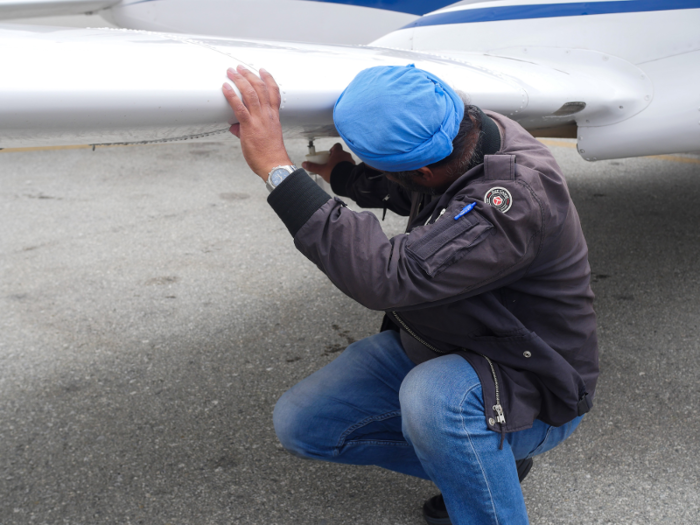
Ian and his Pilatus came to our rescue to take us back toward San Francisco. Airport personnel replenished his fuel tank first.
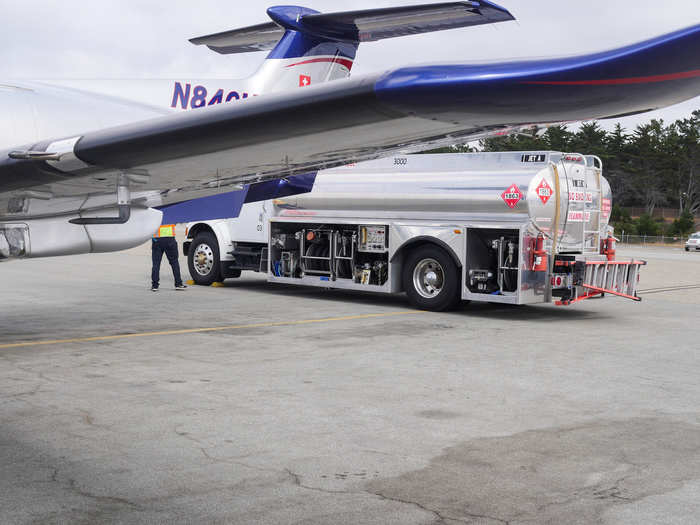
Davis told me that when this happens to passengers, and it has in the past, Blackbird will often comp alternative means of travel, such as an Uber or a Lyft, for customers to get to their final destination.
My day aboard private planes with Blackbird was over, but in all honesty, I would use it again — as long as I could find a cheap, $50 seat.
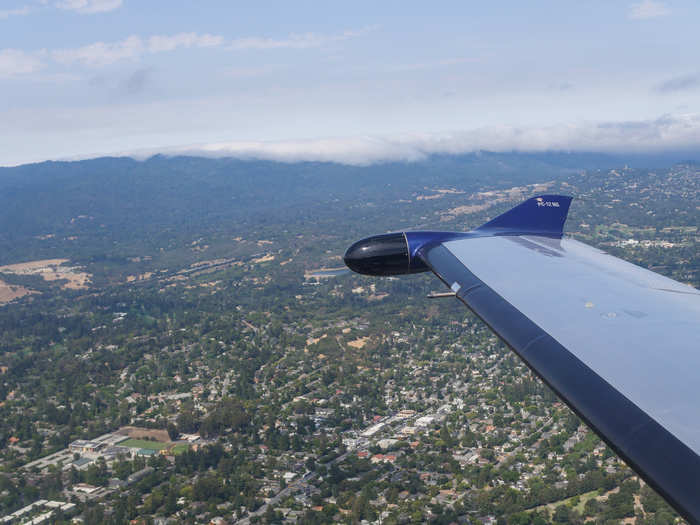
There are 2,500 certified pilots currently on the platform, all of whom must meet a specific set of qualifications before joining, including holding at least 350 hours of recorded flight time, and a commercial pilot's license.
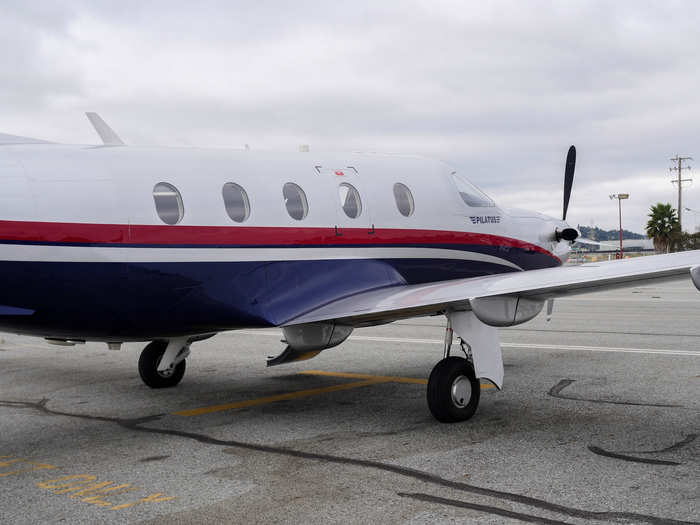
Per the FAA, pilots are not allowed to directly exchange flights for compensation. However, Blackbird found a clever loophole, allowing pilots to share travel expenses with passengers, like fuel and airport fees — meaning that pilots who were going to make these trips anyway get to minimize their own costs.
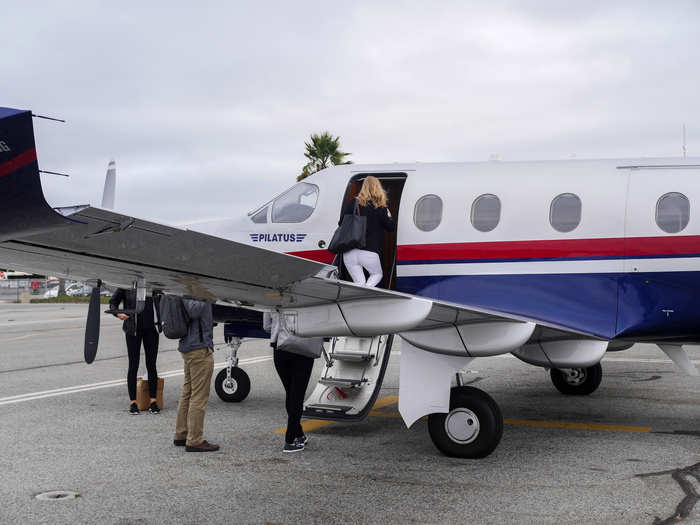
That also means it's possible for a pilot to schedule a trip and not be matched with passengers because they're still flying that route anyways. All a lack of matches translates to is a slight disappointment for the pilot, who lost out on splitting the cost of a trip with a handful of people.
So you can see the appeal for these pilots. Flying aficionados that are in the air anyway can sign up on the app, fill their empty seats with passengers also going their way, and split the costs.
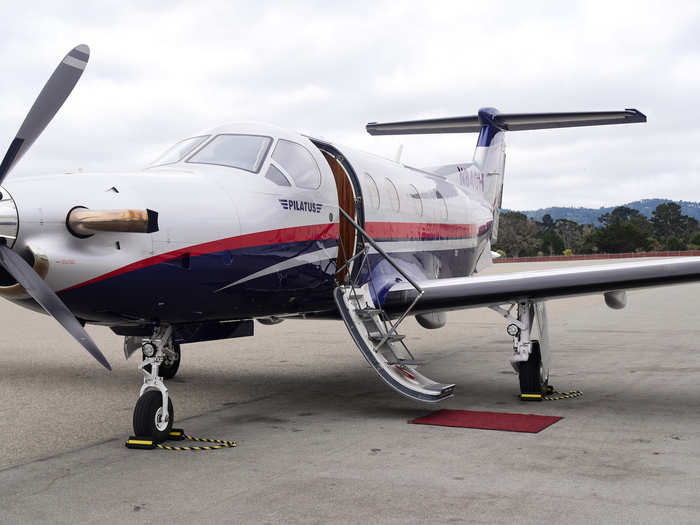
Blackbird serves a number of airports in New York and California's Bay Area, the latter of which is where the company is based.
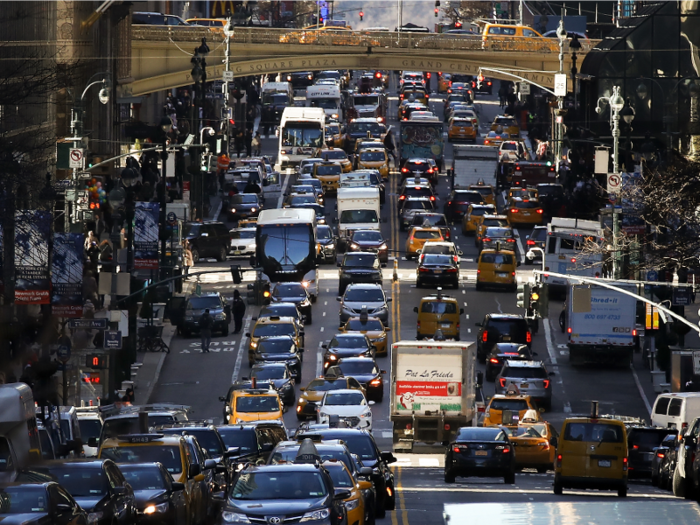
And in the Bay Area, traffic is regularly a doozy. Alternative methods of transportation are always welcome.
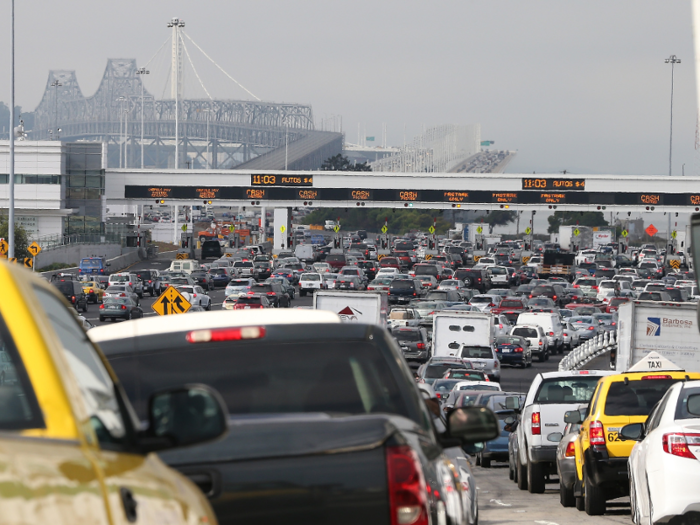
Davis caught on to the trend and launched Blackbird in 2016, providing a service that would fill the gap between driving and commercial flights when traveling regionally.
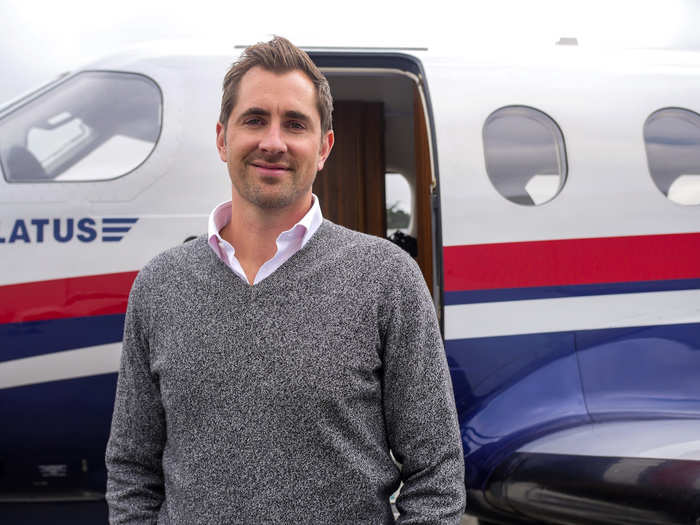
The company has secured a total of $5.5 million from a number of venture capital firms, including Social Capital.
That could also translate to some tech entrepreneurs using Blackbird to get to work, since some already use air travel to skirt the Bay Area's overheated real estate market. Could this be the new commute?
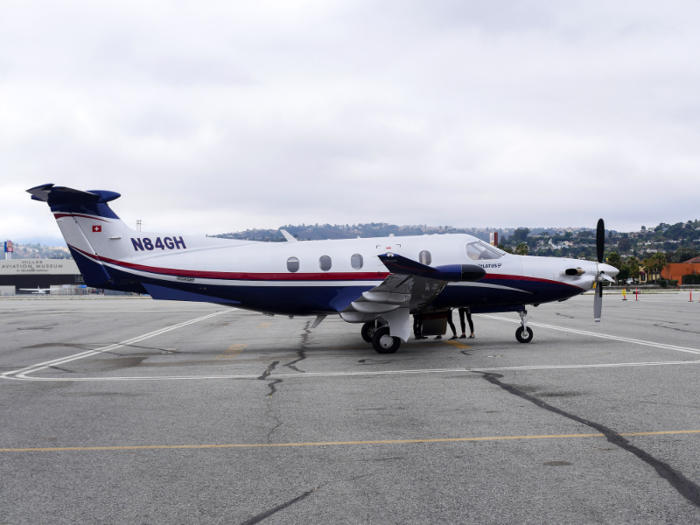
Source: Business Insider
Going forward, Blackbird has plans to expand. This fall, it's launching in Florida, a market that fellow flight-sharing company JetSmarter has operated in for the last six years.
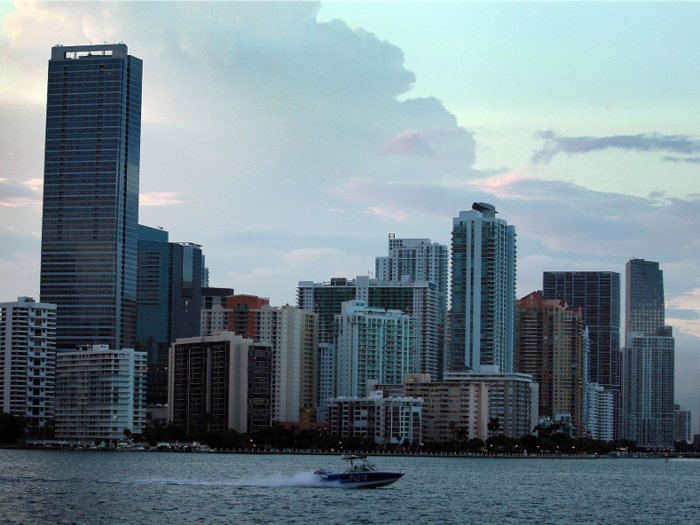
Source: JetSmarter
Another similar concept, Uber's electric flying taxi service Uber Air, is set to begin testing in 2020 before launching in Dallas and Los Angeles three years after. The company claims the service will be "affordable for normal people."
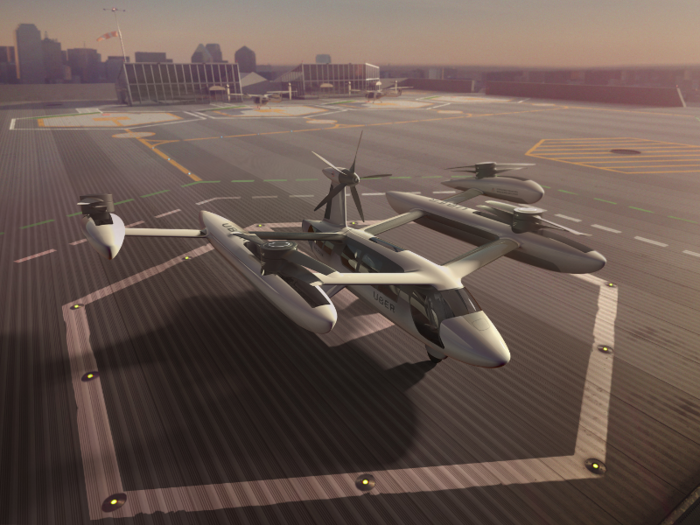
Source: Business Insider
Blackbird claims something similar, aiming to make cost effectiveness a focal point. So maybe it could one day be a go-to travel option...
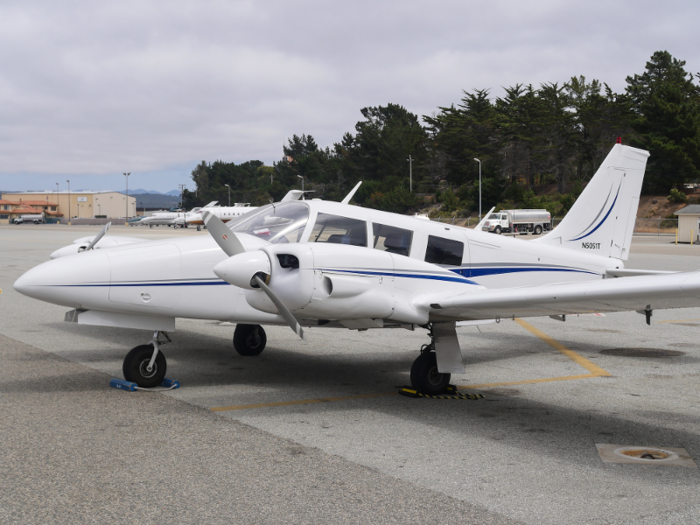
...that is, if consumers are ready for it.
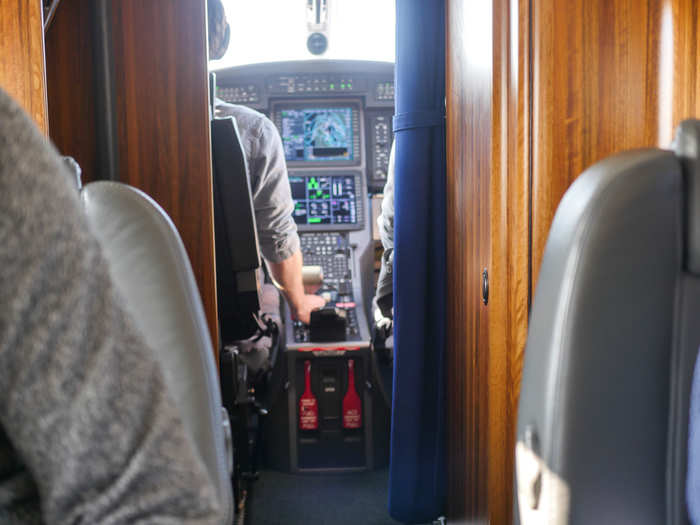
Popular Right Now
Popular Keywords
Advertisement